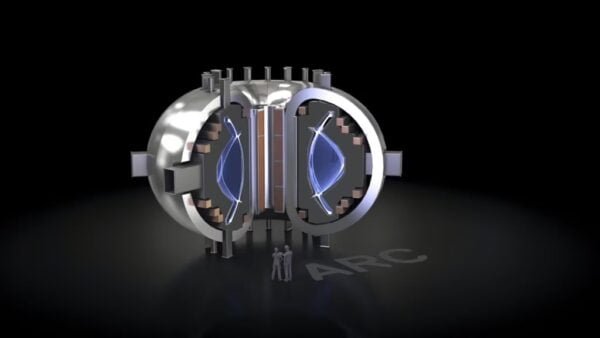The automotive industry is undergoing a major transformation to support electric vehicles (EVs), autonomous driving, high-end infotainment systems, vehicle connectivity, and software-defined vehicles. The goals and benefits of EV transformation and its impact on the automotive supply chain are well understood by now.
However, the digital transformation toward autonomous driving and high-performance computing (HPC) is in the early stages and still evolving. This transformation applies to both EVs and internal combustion engine (ICE) vehicles. The technology disruption due to these up-and-coming trends will create challenges and opportunities for automotive supply chains.
Due to continued population growth and urbanization, modern transportation suffers from congestion, accidents, and lack of access to mobility, which have adverse socioeconomic effects (see Figure 1). The creation of autonomous and connected vehicles for personal use and robotaxis for public transportation will improve convenience, safety, and economic mobility.

Figure 1 Issues when driving can lead to frustration and even accidents. Source: Monolithic Power Systems
The increasing need to digitize vehicles requires advanced technology, new architectures, and the development of innovative components and solutions across the board. For instance, autonomous vehicles require a tremendous amount of high-performance computational horsepower for not only the vehicle itself, but also for the supporting infrastructure.
To enable digitized mobility, automotive original equipment manufacturers (OEMs) and Tier 1s are partnering with system-on-chip (SoC) suppliers to provide the computational power required to advance the automotive industry. This paradigm shift is an opportunity for manufacturers to create new functions and features to satisfy the needs of the modern consumers, as well as to differentiate their products from competitors.
Evolution of automotive computing
Figure 2 shows architecture evolution of automotive computing.

Figure 2 High-power SoCs are prominent in the evolution of modern automotive computing. Source: Monolithic Power Systems
In the past, tens of electronic control units (ECUs) distributed across the vehicle were used to process localized data. Today, domain controllers aggregate and process data for a section of the vehicle. The vehicle of the future will have a central computer to provide the required computational horsepower to support advanced driver assistance features, high-end infotainment systems, connectivity, and other state-of-the-art features.
The central computers for future vehicles will be run by powerful SoCs. These SoCs have advanced CPU and GPU capabilities that process large amounts of data and perform the complex computations that allow vehicles to make decisions in real time. And these SoCs require advanced power management solutions, specifically for the core voltage rails.
SoC core rails require hundreds of amperes of current, with stringent transient performance and efficiency requirements. Servers, data centers, and artificial intelligence (AI) applications have used powerful SoCs and advanced power management solutions for a few generations already, but these solutions are new for automotive applications. Automotive power solutions have additional challenges, such as providing AEC-Q100 qualification and ASIL-D functional safety while maintaining the same high efficiency, fast transient response, configurability, scalability, monitoring, and system protection features as the enterprise SoC solutions.
Automotive SoCs
Figure 3 shows a simplified power tree for automotive SoCs, segmented into high-power core rails and low-power system rails. The low-power rails can use power management ICs (PMICs) or discrete point-of-load (PoL) converters. The high-power core rails require specialized solutions because they have stringent specifications to provide the power needed by the CPUs and GPUs embedded into the SoC. In addition, the SoC may require more than one core rail, depending on its architecture and performance specifications. This article will focus on power solutions for the SoC core rails.

Figure 3 The typical power tree of an automotive SoC includes a battery, battery protection, and multiple power rails. Source: Monolithic Power Systems
Traditional solutions for SoC core rails use analog pulse-width modulation (PWM) controllers, discrete MOSFETs, and discrete current- and temperature-sensing circuitry (see Figure 4). These solutions require many external components, which raises costs, reduces reliability of automotive applications, and requires a larger PCB area. This can make traditional solutions difficult to design and susceptible to a lack of flexibility and scalability, which is a critical requirement for the types of SoCs used in advanced driver assistance systems (ADAS), infotainment, and HPC applications.

Figure 4 A traditional SoC solution requires numerous support components. Source: Monolithic Power Systems
Figure 5 shows an SoC core power solution using digital multi-phase controllers and monolithic DrMOS power stages. The DrMOS integrates the gate driver IC, current-sensing circuit, and temperature-sensing circuit; this enables a simpler solution that eliminates several external components required by traditional solutions.

Figure 5 Digital PWM controllers and monolithic DrMOS devices can simplify the SoC power solution. Source: Monolithic Power Systems
The DrMOS is a monolithic design, which offers high-power density, accurate current-sensing, and accurate on-die temperature sensing. These digital controllers offer flexibility and scalability since the number of phases can be configured depending on the current ratings of the given SoC core rail.
Digital controllers do not require any external feedback loop compensation, which simplifies design work and cuts down on development time. They also feature a non-volatile memory (NVM) to configure and reconfigure the register settings up to 1,000 times. Finally, the controller and DrMOS offer various monitoring and protection features that can be used to implement system-level telemetry.
Automotive SoC and batteries
Modern automotive vehicles have two options for the 12-V battery: a lead-acid battery or a lithium-ion battery. Lithium-ion batteries have a maximum output voltage (VOUT) up to 20 V. Lead-acid batteries have a maximum VOUT of 40 V during transients.
Figure 6 shows a single-stage power conversion implementation using 22-V-rated DrMOS products. The vehicles that use a lithium-ion 12-V battery can use the 22-V DrMOS directly off the battery without the need for a pre-regulator to convert the battery voltage down to SoC core rail voltages. This is an ideal implementation for higher efficiency, smaller PCB area, lower cost, and optimized electrical performance.

Figure 6 Single-stage power conversion can use a 22-V-rated DrMOS with an optional pre-regulator. Source: Monolithic Power Systems
For vehicles that use a lead-acid battery, the maximum voltage can reach up to 40 V during load dump or double battery conditions. In this scenario, a pre-regulator is used to limit the input voltage (VIN) on the DrMOS to a maximum of 20 V in order to protect the DrMOS during transients.
If the vehicle has a lead-acid battery, a pre-regulator can be used as the voltage limiter. This pre-regulator can operate at a 100% duty cycle ratio, which means that under normal operating conditions, it’s simply a pass-through providing >99% efficiency. The pre-regulator works as a buck converter during voltage transients to limit the DrMOS’s VIN to 20 V for a few milliseconds when the battery voltage (VBATT) exceeds the preset 20-V limit.
In terms of electrical performance, implementation with a pre-regulator is similar to single-stage power conversion since the pre-regulator is only active during VBATT transients exceeding 20 V. In addition, the total PCB area with the pre-regulator can still be smaller than a traditional implementation, which uses high-voltage discrete FETs and analog PWM controllers for single-stage conversion.
Figure 7 shows an implementation for a 12 V lead-acid battery-powered automotive application with two-stage power conversion. The first stage converts VBATT down to a 5 V or 3.3 V intermediate bus voltage. The second stage converts the intermediate bus voltage down to the SoC core rails using 6-V-rated DrMOS devices.

Figure 7 Two-stage power conversion can benefit from a 6-V-rated DrMOS. Source: Monolithic Power Systems
Two-stage conversion requires additional semiconductor components, but the overall SoC power solution can be smaller and less expensive for low- to mid-power SoC core rails when compared to a single-stage solution. The system designer must weigh all the factors—for example, 12 V battery chemistry and SoC core rail power specifications—to choose the optimal power architecture for the design.
Figure 8 shows a simplified application schematic using digital, multi-phase controller and monolithic DrMOS power stages. The MPQ2977-AEC1 digital, 6-phase controller is configured for two output rails and three phases for each rail. That leads to fewer external components, while implementing several monitoring and protection features such as over-current protection (OCP), over-voltage protection (OVP), and over-temperature protection (OTP).

Figure 8 The multi-phase controller (top left) is shown inside the application schematic. Source: Monolithic Power Systems
Powering automotive’s distributed architecture
The automotive industry is undergoing a digital transformation toward autonomous driving, high-end infotainment systems, connectivity, and shared mobility to solve the problems faced by today’s drivers and passengers.
As a result, automotive computing architecture is evolving from a distributed architecture to a centralized architecture enabled by powerful SoCs. The SoCs used in central computing require advanced power management solutions, particularly for core voltage rails. Traditional power solutions are no longer well-suited for next-generation central compute power applications.
The power management solutions, digital multi-phase controllers, and DrMOS power stages used in automotive SoC core power applications can deliver scalable, flexible, and compact power solutions with high efficiency and fast transient response. This article explained how to implement a power architecture with single-stage or two-stage power conversion.
Raghu Nathadi is senior product marketing manager at Monolithic Power Systems (MPS).
BY RAGHU NATHADI



